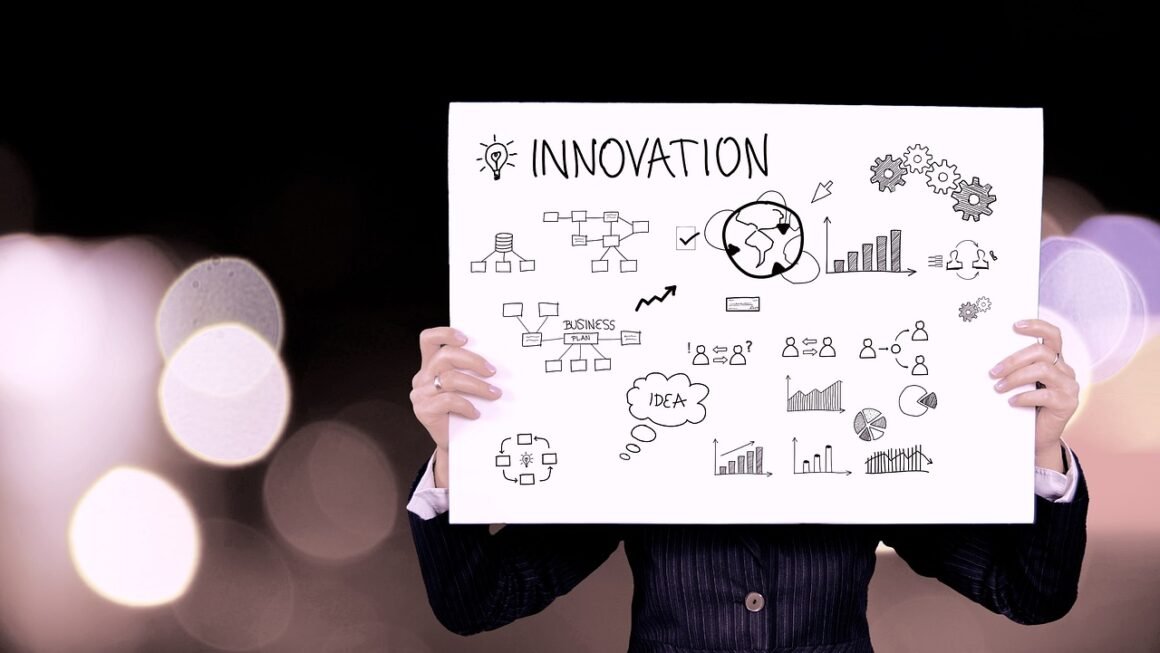Artificial intelligence (AI) is no longer a futuristic fantasy; it’s a tangible force reshaping industries and everyday life. From personalized recommendations to autonomous vehicles, AI applications are rapidly evolving and becoming more sophisticated. Understanding the breadth and depth of these applications is crucial for businesses and individuals alike to leverage the potential of this transformative technology. This blog post explores the diverse landscape of AI applications, providing insights into their functionality, benefits, and real-world impact.
AI in Healthcare
AI is revolutionizing healthcare, improving diagnostics, treatment, and patient care. Its ability to analyze vast datasets and identify patterns is leading to breakthroughs in various areas.
Diagnostic Accuracy and Speed
AI algorithms can analyze medical images like X-rays, MRIs, and CT scans with remarkable accuracy, often surpassing human capabilities in detecting subtle anomalies.
- Example: AI-powered tools can detect early signs of cancer, such as lung nodules or breast cancer lesions, with greater precision than traditional methods, leading to earlier diagnosis and improved patient outcomes.
- Benefits:
Faster diagnosis
Improved accuracy
Reduced human error
Enhanced patient outcomes
Personalized Medicine
AI can analyze patient data, including genetics, lifestyle, and medical history, to develop personalized treatment plans.
- Example: AI algorithms can predict a patient’s response to a particular medication based on their genetic profile, allowing doctors to prescribe the most effective treatment with minimal side effects.
- Benefits:
Targeted therapies
Improved treatment effectiveness
Reduced side effects
More efficient healthcare resource allocation
Drug Discovery
AI is accelerating the drug discovery process by identifying potential drug candidates, predicting their efficacy, and optimizing their structure.
- Example: AI can analyze vast databases of chemical compounds and biological data to identify molecules that are likely to be effective against specific diseases, significantly reducing the time and cost associated with traditional drug discovery methods.
- Benefits:
Faster drug development
Reduced research costs
Identification of novel drug targets
Increased success rates in clinical trials
AI in Finance
The financial industry is rapidly adopting AI to enhance efficiency, improve decision-making, and mitigate risks.
Fraud Detection
AI algorithms can detect fraudulent transactions in real-time by identifying unusual patterns and anomalies.
- Example: AI systems can analyze transaction data, including amount, location, and time, to identify suspicious activities that may indicate fraud, such as unauthorized credit card transactions or money laundering schemes.
- Benefits:
Reduced financial losses
Improved security
Enhanced customer protection
Real-time fraud prevention
Algorithmic Trading
AI-powered trading algorithms can analyze market data, identify profitable opportunities, and execute trades automatically, often at speeds that are impossible for human traders.
- Example: AI algorithms can analyze market trends, news articles, and social media sentiment to identify trading opportunities and execute trades based on pre-defined strategies.
- Benefits:
Increased trading efficiency
Improved profitability
Reduced human error
24/7 trading capabilities
Risk Management
AI can assess and manage financial risks by analyzing vast datasets and identifying potential vulnerabilities.
- Example: AI algorithms can analyze loan applications, credit scores, and market conditions to assess the risk of loan defaults and provide recommendations for loan approvals.
- Benefits:
Improved risk assessment
Reduced loan defaults
Enhanced financial stability
Better regulatory compliance
AI in Retail and E-commerce
AI is transforming the retail and e-commerce landscape, enhancing customer experience, optimizing operations, and driving sales growth.
Personalized Recommendations
AI algorithms can analyze customer data, including purchase history, browsing behavior, and demographics, to provide personalized product recommendations.
- Example: E-commerce platforms like Amazon and Netflix use AI to recommend products or movies that are likely to appeal to individual customers based on their past preferences.
- Benefits:
Increased sales
Improved customer satisfaction
Enhanced customer loyalty
Personalized shopping experiences
Chatbots and Virtual Assistants
AI-powered chatbots and virtual assistants can provide instant customer support, answer questions, and resolve issues, improving customer service and reducing operational costs.
- Example: Retail websites often use chatbots to answer frequently asked questions, provide product information, and assist customers with placing orders.
- Benefits:
24/7 customer support
Reduced customer service costs
Improved customer satisfaction
Instantaneous responses to customer inquiries
Supply Chain Optimization
AI can optimize supply chain operations by predicting demand, managing inventory, and improving logistics.
- Example: AI algorithms can analyze historical sales data, market trends, and weather patterns to predict demand for specific products, allowing retailers to optimize inventory levels and reduce waste.
- Benefits:
Reduced inventory costs
Improved supply chain efficiency
Minimized stockouts
Faster delivery times
AI in Transportation
AI is playing a crucial role in transforming the transportation industry, making it safer, more efficient, and more sustainable.
Autonomous Vehicles
AI is the driving force behind autonomous vehicles, enabling them to navigate roads, avoid obstacles, and make decisions without human intervention.
- Example: Companies like Tesla and Waymo are developing self-driving cars that use AI to perceive their surroundings, plan routes, and control the vehicle.
- Benefits:
Reduced accidents
Improved traffic flow
Increased fuel efficiency
Enhanced mobility for elderly and disabled individuals
Traffic Management
AI can optimize traffic flow by analyzing real-time traffic data, predicting congestion, and adjusting traffic signals.
- Example: AI systems can analyze data from traffic cameras and sensors to identify areas of congestion and adjust traffic signals to alleviate bottlenecks and improve traffic flow.
- Benefits:
Reduced traffic congestion
Improved air quality
Shorter commute times
Optimized traffic signal timing
Predictive Maintenance
AI can predict when vehicles or infrastructure components are likely to fail, allowing for proactive maintenance and preventing costly breakdowns.
- Example: AI algorithms can analyze sensor data from vehicles, such as engine temperature, oil pressure, and tire pressure, to predict when maintenance is required, preventing breakdowns and extending the lifespan of the vehicle.
- Benefits:
Reduced maintenance costs
Improved vehicle reliability
Minimized downtime
Enhanced safety
AI in Manufacturing
AI is transforming manufacturing processes, improving efficiency, quality, and safety.
Predictive Maintenance
AI algorithms can analyze sensor data from machinery and equipment to predict when maintenance is required, preventing breakdowns and reducing downtime.
- Example: AI can analyze vibrations, temperature, and pressure data from industrial machines to predict when components are likely to fail, allowing for preventative maintenance and minimizing disruptions to production.
- Benefits:
Reduced downtime
Lower maintenance costs
Increased equipment lifespan
Improved production efficiency
Quality Control
AI-powered vision systems can inspect products for defects with greater accuracy and speed than human inspectors.
- Example: AI can analyze images of products to identify defects, such as scratches, dents, or missing parts, ensuring that only high-quality products are shipped to customers.
- Benefits:
Improved product quality
Reduced waste
Increased customer satisfaction
Automated inspection processes
Robotics and Automation
AI is enabling robots to perform complex tasks with greater precision and adaptability, automating manufacturing processes and improving productivity.
- Example: AI-powered robots can assemble products, weld components, and package goods with greater speed and accuracy than human workers, increasing production efficiency and reducing labor costs.
- Benefits:
Increased productivity
Reduced labor costs
Improved safety
24/7 operation
Conclusion
AI applications are rapidly expanding across various industries, offering significant benefits in terms of efficiency, accuracy, and innovation. From healthcare and finance to retail and transportation, AI is transforming the way we live and work. Understanding the potential of AI and adopting these technologies strategically is crucial for businesses and individuals to thrive in the age of artificial intelligence. As AI continues to evolve, its impact will only become more profound, shaping the future of our world in countless ways. Embracing AI and investing in AI skills and knowledge is now essential to stay competitive and unlock its transformative power.




